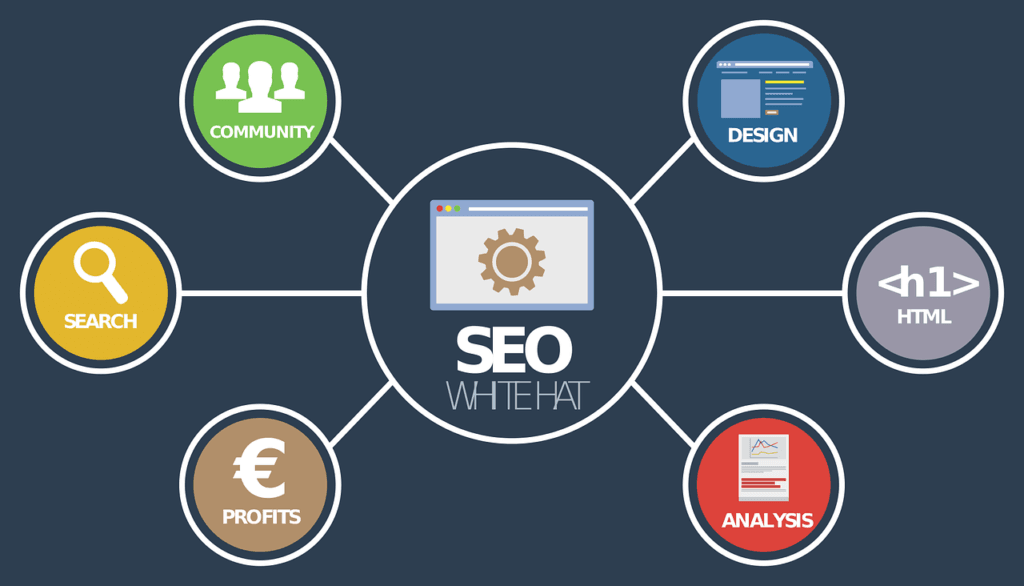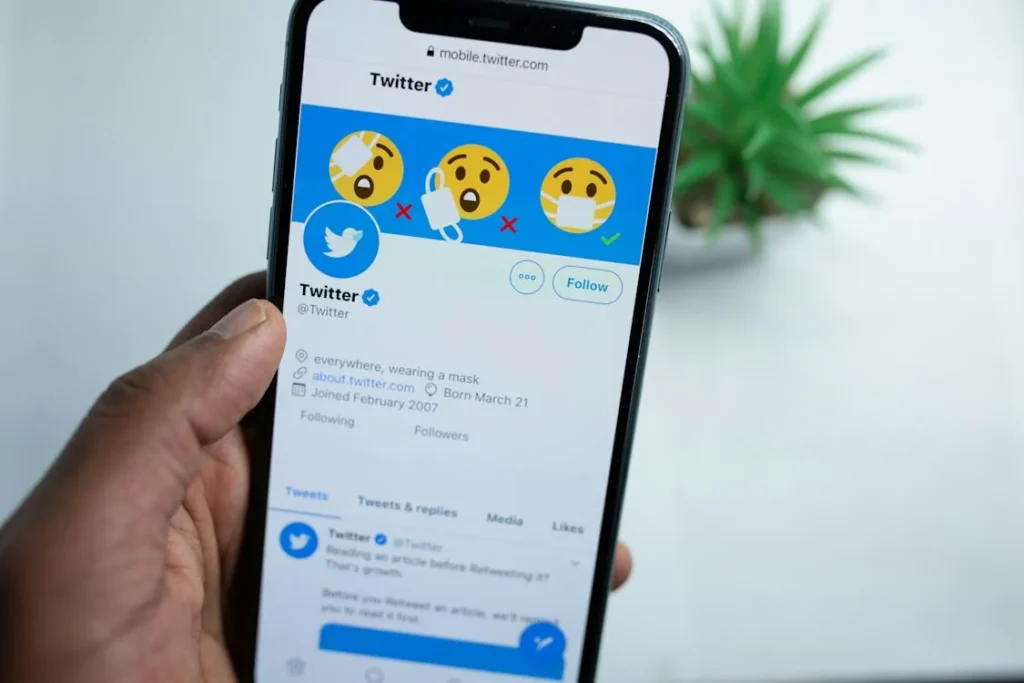Understanding Goods and Services
A comprehensive understanding of goods and services is essential for effective marketing strategies. Knowing their characteristics and how they differ allows you to tailor your approach and connect better with your target audience.
Differentiating Tangibles and Intangibles
Goods and services can be distinguished based on their tangibility. Goods are tangible items that can be physically touched, seen, or measured. These items play a crucial role in economies, often representing the primary outputs of manufacturing and retail sectors (Quora). In contrast, services are inherently intangible; they provide value that cannot be physically touched or measured in the same way. This distinction is vital because selling a service differs significantly from selling a tangible product.
| Aspect | Goods | Services |
|---|---|---|
| Tangibility | Tangible items (e.g., furniture, clothing) | Intangible benefits (e.g., consulting, cleaning) |
| Experience | Can be experienced through touch and sight | Experienced through interaction and results |
| Value Proposition | Based on product features and quality | Based on expertise, solutions, and time |
Goods vs. Services Overview
Both goods and services contribute to the overall marketplace, but they cater to different consumer needs. Goods are typically physical items that customers purchase at a price, while services are amenities or benefits provided by others, such as professional skills or expertise (GeeksforGeeks).
In marketing, a critical factor in effectively promoting goods and services is recognizing the competitive landscape around each type. While all products and services can be classified as either goods or services, a more insightful approach is to focus on how customers perceive value and what emotional connections they have with the items they’re considering (Harvard Business Review).
Understanding the differences and unique characteristics of goods and services can enhance your marketing strategies, enabling you to effectively position your offerings within the market. For a more in-depth look at how to promote your goods and services, visit our articles on promoting goods and services and advertising goods and services.
Characteristics of Goods
Understanding the characteristics of goods is essential for effectively marketing them. Goods are tangible items that customers can physically experience, making them distinct from services.
Tangibility of Goods
Goods are tangible in nature. They can be seen, touched, and measured, making them more straightforward in terms of marketing and sales. Customers can evaluate goods before purchase, which provides a different shopping experience compared to services. This tangible nature plays a crucial role in economies as tangible goods are often the primary outputs of the manufacturing and retail sectors (GeeksforGeeks, Quora).
| Characteristic | Description |
|---|---|
| Physical Presence | Goods can be touched and felt. |
| Visual Appeal | Goods can be seen before purchase. |
| Measurable | Goods can be quantified in terms of weight, size, etc. |
Production and Classification
Goods can be classified into different categories based on various criteria such as their use and durability. The main classifications are as follows:
| Type of Goods | Description |
|---|---|
| Consumer Goods | Products intended for personal consumption, like clothing or food. These can be further divided into convenience goods, shopping goods, and specialty goods. |
| Industrial Goods | Items used in the production of other goods or for business operations, such as machinery, tools, and equipment. |
| Tangible Personal Property | Physical assets that can be moved and are not considered real estate (Quora). |
Understanding these classifications can help you develop a more targeted marketing strategy for goods and services, allowing you to tailor your approach based on the specific characteristics and needs of your target market. Additionally, recognizing the tangible nature of goods can enhance your advertising goods and services.
Characteristics of Services
Understanding the characteristics of services is crucial for formulating effective marketing strategies. Unlike goods, services possess unique traits that require careful consideration when developing marketing campaigns.
Intangibility of Services
One of the primary characteristics of services is their intangibility. Unlike tangible goods, which can be seen or touched, services are amenities or activities offered to consumers. This means you cannot physically evaluate a service before purchasing it. For example, you cannot “try on” a haircut or “test” a massage before receiving it (Quora).
Intangibility poses challenges for marketers as they need to find creative ways to convey the value of their services. This can involve promoting testimonials, showcasing qualifications, and creating engaging content that illustrates the benefits of the services offered. You can read more about this in our article on characteristics of services in marketing.
Types of Services
Services can be categorized into different types based on their nature and delivery. This classification helps you tailor your marketing efforts to the specific service category. Below are some common types of services:
| Service Type | Description |
|---|---|
| Business Services | Services that support business operations, such as consulting, accounting, and IT support. |
| Social Services | Services that aim to improve societal welfare, like education, healthcare, and community service. |
| Personal Services | Services aimed at individual needs, including beauty treatments, dining, and entertainment. |
Goods differ significantly in their classifications, as they tend to be tangible objects that can satisfy consumers’ needs and wants. Understanding the nature of the services you offer enables you to effectively position and market them. Consider further reading on marketing strategy for goods and services to deepen your understanding.
By grasping the key characteristics of services, you can develop more focused marketing approaches that resonate with your target audience, ensuring that both your goods and services thrive in the competitive landscape.
Marketing Goods
Effective marketing of goods is essential for any business aiming to attract and retain customers. Below are key strategies for product marketing and ways to effectively target consumers.
Product Marketing Strategies
In product marketing, your goal is to highlight unique features and benefits that set your offerings apart from competitors. This can be achieved by emphasizing design, quality, and value of the product. Consider implementing the following strategies:
Content Marketing: Create engaging content that raises awareness about your products. Educate customers on how to use them effectively, showcasing why your products are superior to others in the market (LinkedIn).
Compelling Product Descriptions: Ensure that product descriptions clearly communicate features and benefits, making it easy for customers to make purchasing decisions. This clarity can significantly enhance conversion rates.
Visual Display: If you’re selling in-store or online, ensure your products are visually appealing. Customers respond positively to well-displayed items, whether they can touch or manipulate products before purchase.
Customer Engagement: Encourage reviews and feedback from customers. This can lead to valuable insights and help improve your marketing strategy while enhancing your product’s credibility (U.S. Chamber of Commerce).
| Strategy | Description |
|---|---|
| Content Marketing | Raise awareness and educate on product usage. |
| Compelling Product Descriptions | Clearly communicate product features and benefits. |
| Visual Display | Enhance customer experience through appealing product presentations. |
| Customer Engagement | Leverage customer feedback and reviews for ongoing improvements. |
Targeting Product Consumers
Understanding your target market is crucial for effectively marketing goods. Here are strategies to identify and reach your consumers:
Market Segmentation: Divide your market into segments based on demographics, behaviors, or interests. This will help tailor your marketing efforts to meet the specific needs of each group.
Consumer Behavior Analysis: Study how consumers interact with your products. This includes understanding their decision-making process and the factors that influence their purchasing decisions (consumer behavior towards goods and services).
Targeted Advertising: Use targeted advertising campaigns that resonate with your identified consumer segments. This could include social media ads, email marketing, or search engine marketing focused on your potential consumers.
Promotions and Discounts: Introduce promotions or discounts tailored to specific consumer segments. This can drive sales and attract new customers to try your products.
Through an understanding of product marketing strategies and targeted consumer outreach, you can maximize the impact of your goods in the market. Additionally, consider cross-selling and upselling techniques such as those discussed in cross-selling goods and services to enhance your overall sales strategy.
Marketing Services
In the realm of marketing, successfully promoting services requires a distinct and strategic approach compared to marketing tangible goods. To appeal effectively to your target audience, you should focus on specific marketing tactics and understand the preferences of service consumers.
Service Marketing Tactics
When crafting a service marketing strategy, it’s essential to highlight the unique benefits of your services. The marketing tactics you employ should showcase your experience, efficiency, convenience, and quality. For instance, you may consider providing detailed testimonials and case studies that focus on your personnel’s expertise and the attention your business gives to customer needs. These elements help build trust and credibility, which are vital for service-based offerings (LinkedIn).
You should also employ content that establishes your authority in the field. Engaging blog posts, informative videos, and interactive webinars can demonstrate your knowledge and set you apart from competitors.
Overall, your service marketing should emphasize the value proposition and user experience rather than just the service itself. Below is a table outlining key service marketing tactics:
| Tactic | Description |
|---|---|
| Testimonials | Use customer feedback to build trust and credibility. |
| Case Studies | Showcase successful service delivery to highlight expertise. |
| Content Marketing | Create valuable content to demonstrate knowledge and authority. |
| Local SEO | Optimize for local search to improve visibility and attract nearby customers (LinkedIn). |
Targeting Service Consumers
Understanding your target consumers is critical for result-driven marketing strategies. Consumers seeking services often have immediate needs and typically favor businesses that can fulfill those needs efficiently. Therefore, you should focus on identifying customer segments that fit your service offerings and guide them toward your solutions.
To effectively target service consumers, consider employing market segmentation strategies. This allows you to tailor your messaging and marketing tactics to specific groups based on demographics, needs, and behaviors. You can gather valuable insights through market research for goods and services to determine the most pressing needs of your audience.
Additionally, consider using platforms that lend visibility and foster interaction, such as social media or local business directories. Engaging with consumers through these channels allows you to establish relationships and respond to inquiries, further enhancing your credibility.
Implementing these strategies will help you effectively reach and resonate with service consumers, ultimately leading to increased satisfaction and loyalty. You may also want to explore advertising goods and services to enhance your overall approach to service marketing.
Importance of Consumer Behavior
Understanding consumer behavior is crucial for effectively marketing your goods and services. It involves analyzing how individuals and groups make decisions to purchase, use, and discard various offerings. Insights gained through this exploration can significantly inform your marketing strategies and decision-making processes.
Understanding Consumer Choices
Consumer behavior encapsulates the emotional, cognitive, and behavioral reactions of individuals as they interact with products and services. By studying these patterns, you can uncover essential motivations, influences, and processes that guide consumer choices (Omniconvert). This understanding enables businesses to design impactful marketing tactics that resonate with potential customers.
| Factors Influencing Consumer Choices | Description |
|---|---|
| Marketing Campaigns | Promotional strategies that shape perceptions and drive purchasing decisions. |
| Economic Conditions | The financial environment influencing consumers’ purchasing power and priorities. |
| Personal Preferences | Individual tastes and needs that affect product or service choice. |
| Group Influence | The impact of friends, family, or social groups on consumer decisions. |
Knowing these factors allows you to tailor your marketing efforts to better align with the needs and desires of your target audience. For further guidance, you might explore marketing strategy for goods and services.
Impact on Goods and Services
The choices consumers make have a direct effect on how goods and services are perceived and marketed. When you understand consumer behavior, you can identify market trends and shifts in preferences, subsequently adapting your offerings and marketing strategies accordingly. This insight also aids in identifying potential areas for product development, promotions, and customer engagement strategies.
Effective marketing considers behavior patterns influenced by various external factors, leading to better outcomes for your offerings. Insights drawn from consumer behavior analysis can enhance your approaches to branding goods and services and advertising goods and services, ensuring that you meet your audience’s expectations and needs.
To gain an advantage, consider investing time in market research for goods and services. By publicly understanding how consumers interact with your products, you can refine your approach, boost customer satisfaction, and potentially win market share.
Challenges Faced in Product Marketing
When marketing goods, understanding the hurdles you might face is essential for effective strategy implementation. Two significant challenges are inventory management and customer reviews and satisfaction.
Inventory Management
Effective inventory management is critical in product marketing. You need to ensure that you maintain sufficient stock to meet consumer demand without overstocking, which can lead to increased holding costs. Product-based businesses often struggle with these dynamics, especially when demand fluctuates.
| Challenge | Description |
|---|---|
| Demand Variability | Products must be produced according to market demand, which can be unpredictable. |
| Storage Constraints | Limited space can complicate the storage of excess inventory. |
| Stockouts | Running out of inventory can lead to lost sales and negative consumer experiences. |
Managing the manufacturing process, inventory levels, and consumer buying patterns allows you to keep adequate stock levels. Utilize inventory management software to track your products in real time, enabling you to make informed decisions about restocking. You can learn more about the distribution of goods and services to optimize your inventory strategy.
Customer Reviews and Satisfaction
Customer feedback is vital for your goods and services. Positive reviews can boost your reputation, while negative ones can significantly hinder it. In today’s digital age, consumers frequently leave reviews online, and these can impact the purchasing decisions of potential buyers.
To mitigate the risks associated with bad customer reviews, focus on the following:
| Strategy | Description |
|---|---|
| Product Quality | Ensure that the products meet customer expectations in quality and performance. |
| Customer Service | Responsive customer support can help resolve issues before they escalate to negative reviews. |
| Post-Purchase Engagement | Follow up with customers to gauge their satisfaction and address concerns promptly. |
Implementing these strategies can enhance customer satisfaction and loyalty. You might also want to explore the larger implications of consumer behavior towards goods and services to better understand how consumers interact with your products. This knowledge will guide your efforts in promoting and sustaining your goods effectively.
Challenges Faced in Service Marketing
Marketing services presents its own unique set of challenges compared to marketing goods. Two significant hurdles that you may encounter are building customer relationships and handling customer complaints.
Building Customer Relationships
In service marketing, the relationship you build with your customers is paramount. Unlike tangible products that can be showcased, services are often intangible and depend heavily on trust and credibility. Testimonials focusing on personnel expertise, personalized service, and an understanding of client needs are crucial in establishing this trust (LinkedIn). This relationship-building process involves ongoing engagement and consistent communication.
Effective strategies to strengthen customer relationships include:
| Strategy | Description |
|---|---|
| Personalized Communication | Tailor your messaging to fit the individual’s preferences and prior interactions. |
| Exceptional Service | Provide quality service that exceeds customer expectations, encouraging them to return. |
| Feedback Mechanisms | Create channels for customers to share their thoughts, enabling you to adjust your services accordingly. |
This approach not only improves customer satisfaction but also enhances loyalty, leading to repeat business and positive referrals.
Handling Customer Complaints
In any service-oriented business, handling customer complaints effectively is vital. Given that you provide an intangible product, the perception of service quality can significantly impact your reputation. A comprehensive strategy to manage complaints can help mitigate negative experiences and foster a better customer relationship.
Here are some tips for effective complaint management:
| Tip | Description |
|---|---|
| Listen Actively | Give the customer your full attention and ensure they feel heard and valued. |
| Acknowledge Issues | Recognize the complaint and validate the customer’s feelings to show empathy. |
| Provide Solutions | Offer immediate resolutions or alternatives to address the customer’s concerns. |
Addressing complaints swiftly not only resolves issues but can also turn dissatisfied customers into loyal advocates if they feel that their concerns are taken seriously. Understanding these challenges in service marketing can guide you in developing effective strategies that recognize both the uniqueness of services and the importance of strong consumer relationships. For more insights into consumer behavior towards goods and services, check our related articles.
Comparing Selling Products and Services
Key Differences in Marketing Approaches
When marketing goods and services, your approaches will differ significantly due to the inherent characteristics of each. Goods, being tangible items, allow you to showcase specific features, enabling you to demonstrate the physical attributes of the product. This method includes displaying items in-store or online, allowing customers to touch or manipulate the product before purchase. As a result, your customers can more easily determine a product’s value (U.S. Chamber of Commerce).
In contrast, marketing services requires a different strategy, as services are intangible and cannot be physically touched or seen. Instead, the focus often shifts to showcasing the benefits and value derived from the service itself. You may utilize testimonials or case studies to highlight customer satisfaction or demonstrate the effectiveness of your services. Additionally, you should emphasize how the service addresses a specific need or solves a problem for your target audience.
| Aspect | Goods Marketing | Services Marketing |
|---|---|---|
| Tangibility | Products are tangible items | Services are intangible |
| Marketing Focus | Features and specifications | Benefits and outcomes |
| Evaluation | Customers can physically interact with products | Customers rely on reviews and testimonials |
| Inventory | Requires inventory management | Generally less expensive, no inventory needed |
Operational Variances and Customer Reviews
Operational variances also play a critical role in marketing goods versus services. Selling goods typically involves managing inventory, logistics, and shelf space, which can add complexity to your operations. This requires a reliable distribution strategy to ensure your products are easily accessible to consumers. For more insights on the distribution of goods and services, you can refer to our article on distribution of goods and services.
On the other hand, service businesses often incur lower operational costs since they do not require large inventories. This can lead to higher profitability, but it also means that service-related shortcomings or poor customer experiences can have a more significant impact on your business reputation. Bad reviews for services can dissuade potential customers, making reputation management crucial in service marketing (U.S. Chamber of Commerce).
In conclusion, understanding the key differences in marketing approaches and operational variances for goods and services can help you develop a successful strategy tailored to your specific market needs. Adapting your marketing tactics based on the nature of your offerings will ultimately lead to increased customer satisfaction and loyalty.





















